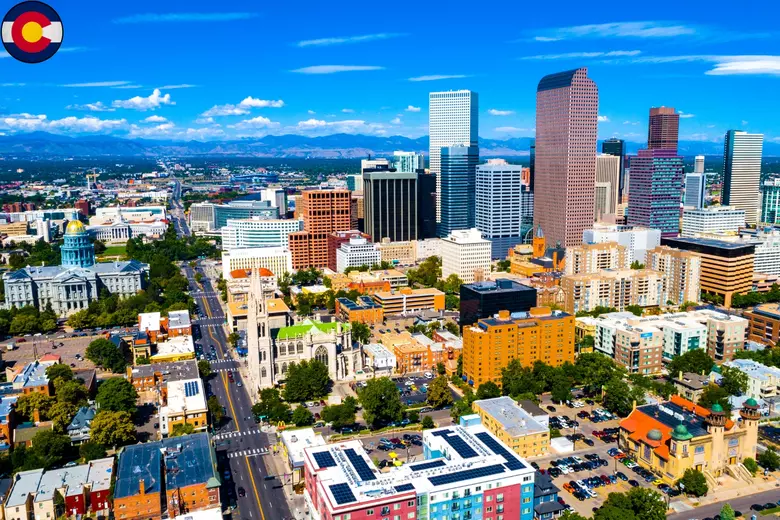Colorado, renowned for its breathtaking mountain vistas, vibrant cities, and outdoor adventures, allures countless people seeking a high quality of life. However, like any state, Colorado has areas that fall short of idyllic. This article delves into five towns and cities that consistently rank low due to factors like crime rates, economic hardship, limited amenities, and other quality-of-life issues.
Important Considerations
Before we dive into the list, let’s clarify some key points:
- Subjectivity: What makes a place “bad” is subjective. Factors like income, lifestyle preferences, and priorities weigh heavily on individual perceptions.
- Fluctuations: Rankings can shift over time. Crime rates fluctuate, economies change, and towns revitalize. Always use the most up-to-date data.
- Purpose of the Article: This list is not meant to deter everyone from these locations. It aims to provide a realistic picture for those considering relocation, highlighting challenges alongside potential positives to enable informed decisions.
Methodology
This list draws on a mix of quantitative and qualitative data, considering factors including:
- Crime: Property crime and violent crime rates per capita, sourced from FBI Uniform Crime Reports and local police data.
- Economy: Unemployment rates, median household income, and poverty rates from the U.S. Census Bureau.
- Cost of Living: Housing affordability, transportation costs, and overall living expenses relative to income levels.
- Amenities: Access to healthcare, education, cultural institutions, recreation, and shopping.
- Subjective Reports: Resident reviews on sites like Niche and AreaVibes, news articles, and community forums.
The Five Locations
Let’s delve into the five specific Colorado locations that frequently appear on “worst” lists:
- La Veta, Colorado
- Location: Nestled in Southern Colorado, La Veta boasts scenic surroundings but struggles with socioeconomic problems.
- Issues
- High Crime: Property crimes and violent crimes are significantly above the national average.
- Economic Hardship: Low median income, high poverty, and unemployment rates.
- Limited Amenities: Few options for healthcare, education, and entertainment.
- Alamosa, Colorado
- Location Situated in the San Luis Valley, Alamosa is a gateway to the Great Sand Dunes National Park.
- Issues:
- Poverty: Alarmingly high poverty rate, affecting a substantial portion of the population.
- Crime: While not the highest in Colorado, crime rates do surpass national averages.
- Isolation: Limited job opportunities and a sense of remoteness can be challenging.
- Pueblo, Colorado
- Location: Southern Colorado city known for its steel industry heritage.
- Issues:
- Crime: Higher rates of both property and violent crime compared to state and national levels.
- Economic Struggles: Unemployment above average, lower median income, and a higher percentage of residents in poverty.
- Urban Decay: Sections of Pueblo exhibit signs of decline, with aging infrastructure and vacant properties.
- Trinidad, Colorado
- Location: Historic town in Southern Colorado near the New Mexico border.
- Issues
- Economic Decline: Loss of industries has led to high unemployment and widespread poverty.
- Drug-Related Issues: Substance abuse and related crimes are a significant concern.
- Blight: Parts of the town face neglect and a lack of revitalization.
- Sheridan, Colorado
- Location: Small city within the Denver metropolitan area.
- Issues
- High Crime: Violent and property crime rates well above national averages.
- Cost of Living: Housing costs outpace income levels for many residents.
- Limited Sense of Community: Some residents report a lack of community cohesion and amenities.
Honorable Mentions
Other Colorado locations that sometimes surface in “worst of” lists include:
- Sterling, Colorado: Issues with crime and economic stagnation.
- Walsenburg, Colorado: High poverty and limited opportunities.
- Commerce City, Colorado: Crime and environmental concerns around industrial areas.
Why Do People Live in These Places?
It’s crucial to remember that even seemingly undesirable areas can offer redeeming qualities and reasons why people choose to reside there:
- Affordability: The cost of living is significantly lower in many of these places relative to Colorado’s booming cities and resort towns.
- Family Ties: Many people are born and raised in these towns with deep roots in the communities.
- Sense of Community: Smaller towns often have a tight-knit feel that appeals to some residents.
- Access to Nature: Even with limited amenities, proximity to mountains, forests, and rivers can be a major draw for outdoor enthusiasts.
- Potential for Improvement: Some of these towns may be poised for revitalization efforts, offering a chance to be part of their transformation.
Important Disclaimers
- Stigma: “Worst places” lists can perpetuate negative stereotypes, overlooking a location’s positive aspects and impacting those who live there.
- Every Neighborhood is Different: Even within these towns, there are likely safer and more desirable neighborhoods. Blanket generalizations should be avoided.
- Individual Needs Matter: A “bad” place for one person can be a good fit for another based on financial circumstances, lifestyle choice, and personal priorities.
Conclusion
Colorado is a state of extraordinary natural beauty and diverse communities. Like anywhere, it has its less glamorous corners. While lists examining underperforming towns can provide practical information for potential residents, it’s essential to approach these rankings with nuance.
Remember, every location has a story, and it’s vital to:
- Research Thoroughly: Go beyond “worst of” lists, consult diverse sources, and visit places yourself to get a firsthand sense.
- Balance Concerns with Potential: Weigh practical challenges against any mitigating factors like affordability or proximity to desirable destinations.
- Focus on Your Priorities: Ultimately, what constitutes a “good” or “bad” place comes down to individual needs and what you value most in a community.
Sources
- FBI Uniform Crime Report (https://ucr.fbi.gov/)
- U.S. Census Bureau (https://www.census.gov/)
- Niche (https://www.niche.com/)



